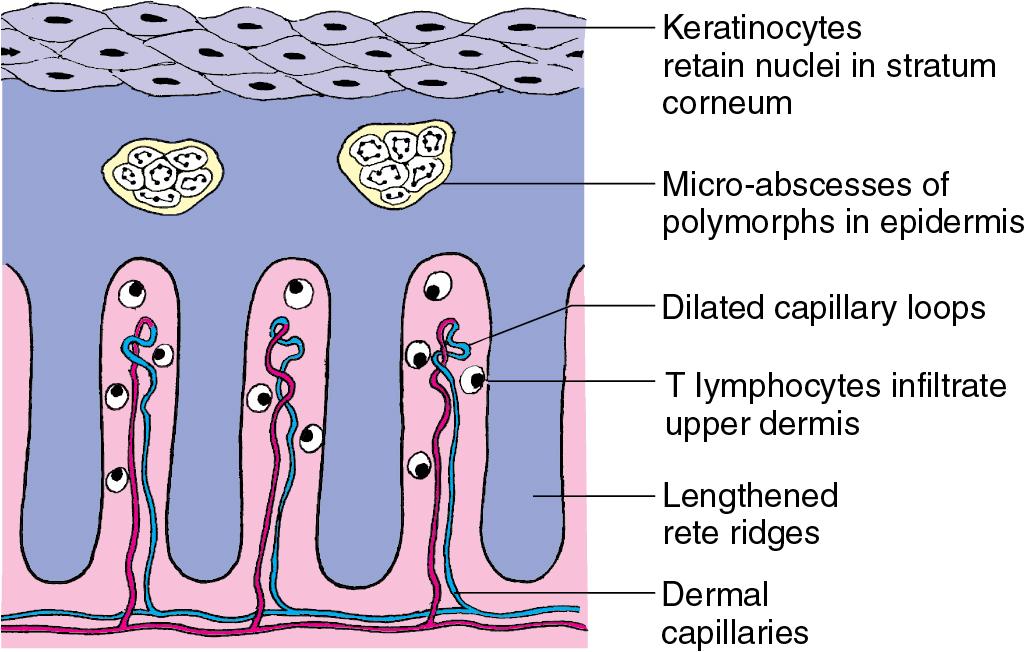Physical Address
304 North Cardinal St.
Dorchester Center, MA 02124
Psoriasis is a chronic, non-infectious, inflammatory dermatosis characterized by well-demarcated erythematous plaques topped by silvery scales ( Fig. 16.1 ).

Psoriasis affects 1.5%–3% of the population in Europe and North America, but is less common in Africa, China and Japan. The sex incidence is equal. The condition may start at any age, even in the elderly. The two peaks of onset are the second to third and the sixth decades. It is unusual in children under 8 years old. An association with the metabolic syndrome (the cluster of diabetes, hypertension and obesity) is an important recent discovery.
Inherited factors predispose to the development of psoriasis: genetic factors appear to be polygenic (p. 12). About 35% of patients show a family history, and identical twin studies show a concordance of 64%. There is a 14% probability that a child with one parent who has psoriasis will be affected, but this increases to 41% if both parents have psoriasis. There are strong correlations with the human leucocyte antigens (HLAs), e.g. HLA-Cw6. Environmental factors are thought to trigger the disease in susceptible individuals.
Become a Clinical Tree membership for Full access and enjoy Unlimited articles
If you are a member. Log in here